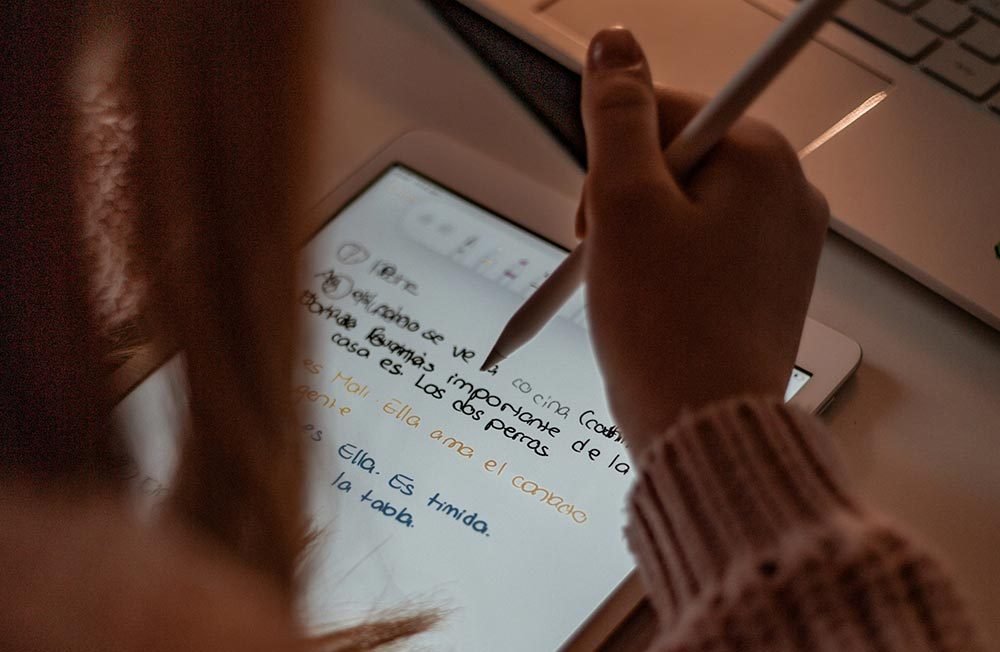When one begins to study Spanish, one of the first concerns is to differentiate the uses of the verbs ser and estar. In addition, there is the difficulty of using these verbs with certain adjectives. Today in The Spanish Club we want to show you how to apply these spanish verbs accordingly with just a few steps.
Spanish Verbs: Ser y Estar
We use the spanish verb SER to talk about the characteristics of people, things, animals and places. For example: Luis es simpático.
We use the spanish verb ESTAR to give a more subjective description of a particular time or circumstance. For example: Luis is very talkative, it is not normal for him, he is normally very quiet.
As you can see these two Spanish Verbs have the same meaning in English (To Be), that’s why is key to understand the context of the phrase to know which of these spanish verbs we need to implement in our sentence.
wHEN TO uSE «SER»
To identify a person or a certain thing:
- ¿Quién es ese niño? Él es mi hijo.
- ¿Qué es esto? Esto es un lápiz.
To get to know the nationality or the origin of the people or the things:
- Soy española.
- Mi amiga Lucía es italiana.
- Soy de España.
- Mi iPhone es de Estados Unidos.
To say the political or religious ideology of the people:
- Mi amigo Carlos es católico.
- Mis tíos son republicanos.
To indicate the ownership and authority of someone:
- Este coche es de Maria Luisa.
- Las Meninas son de Velázquez.
To identify the material of something:
- Estos pantalones son vaqueros.
- Mi chaqueta es de lana.
- La botella es de plástico.
To say the time:
- Son las diez y media de la mañana.
- Es la una de la tarde.
In Spanish we distinguish hours in the singular and in the plural. We use «es» to say «es la una» and we use «son» for the rest of the hours: son las dos, son las tres, etc.
To say the date:
- Hoy es 7 de Julio de 2021.
To indicate de season that we are in:
- Es verano.
To indicate your profession:
- Mi padre es fontanero.
- Yo soy profesora de español.
To make descriptions of people, things, animals or places:
- Pedro es alto.
- Mi mochila es muy pesada.
- El perro de Juan es negro.
- El lago es muy profundo.
To identify a quantity:
- Somos diez para jugar un partido de baloncesto.
- Nos vamos de vacaciones, somos cuatro en el coche.
To identify a certain order:
- El concierto será en la Plaza Mayor.
- La exposición de Pablo Picasso fue en el Reina Sofía.
Passive Voice:
- Las Señoritas de Avignon fueron pintadas por Picasso en 1907.
- El Quijote fue escrito por Cervantes en 1605.
wHEN TO uSE «Estar»
To indicate the position of people and animals:
- Estoy sentada en el suelo.
- Mi perro está tumbado en el sofá.
- Julia está de pie.
To indicate company:
- ¿Estás con mamá? No, estoy con mis amigos.
To indicate your mood:
- ¿Qué tal estás? Estoy bien, gracias.
To talk about actions in progress or that are frequently repeated. We use the verb «Estar» + gerund:
- Estoy hablando por teléfono con mi novio.
- Últimamente, Carmen está trabajando mucho.
To indetify the material of something that is made:
- Mi chaqueta está confeccionada con lana.
- La botella está hecha de plástico.
Use of the verb «Estar» to indicate the profession of someone in a concrete moment or occassion:
- Mario es estudiante, pero está de camarero este verano (indicamos que, puntualmente, Mario está trabajando de camarero).
To indicate the quantity:
- Estamos diez para jugar un partido de baloncesto.
- Nos vamos de vacaciones, estamos cuatro en el coche.
To identify the order:
- Mi hijo está en primer lugar de salida.
- Estoy el segundo en la fila.
To indicate the season we are currently in:
- Estamos en verano.
To indicate the date:
- Hoy estamos a 7 de Julio de 2021.
To talk about a location and/or situation:
- Los músicos están en la Plaza Mayor.
- La exposición de Pablo Picasso está en el Reina Sofía.
Passive voice: Verb «Estar» + Participle:
- La ventana está abierta.
With this extensive list of examples we hope that you have a more clear idea of when to use the Spanish Verbs Ser & Estar. If you want to keep learning tips & advices for studying spanish follow our blog!


Trackbacks/Pingbacks